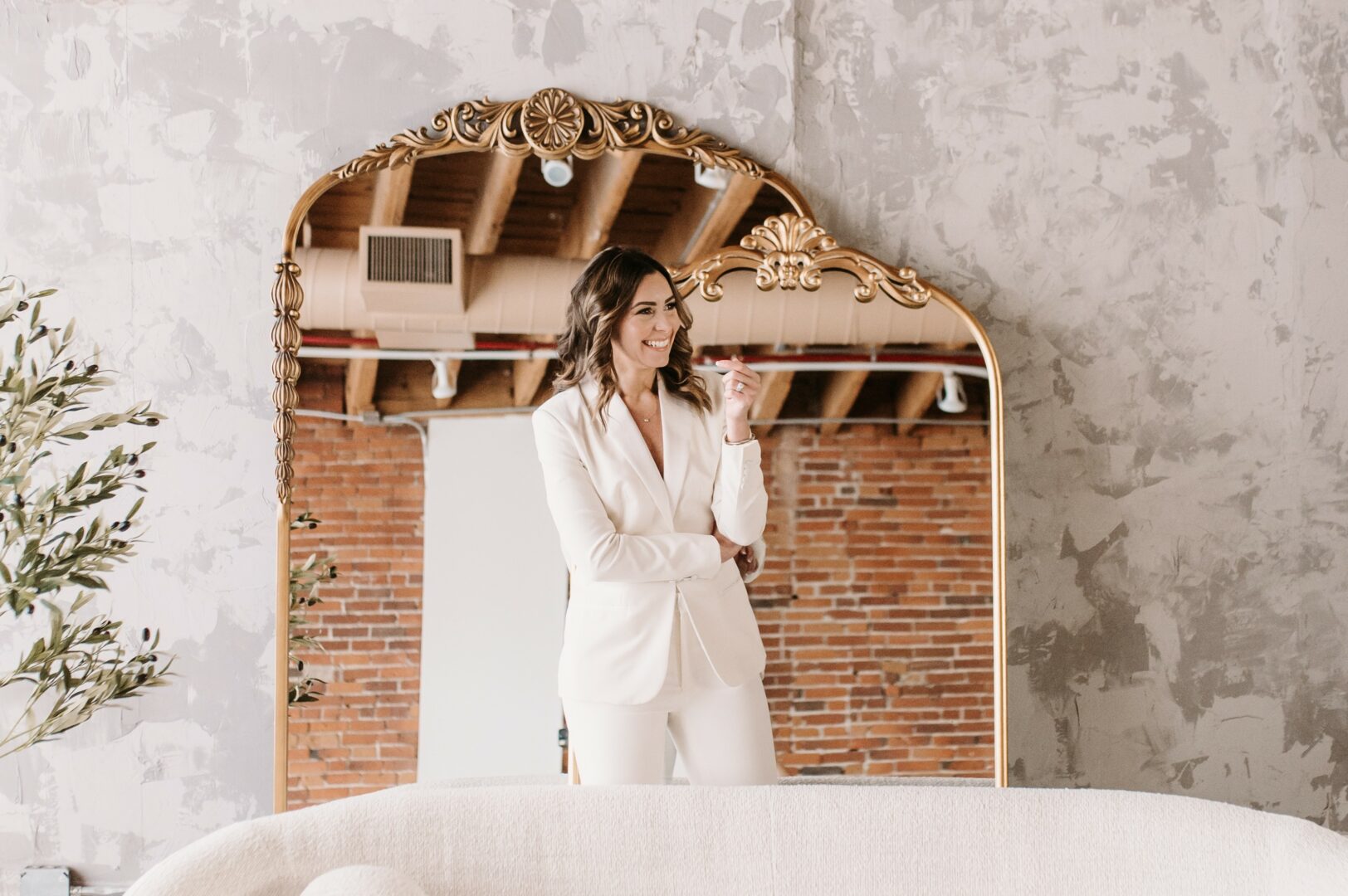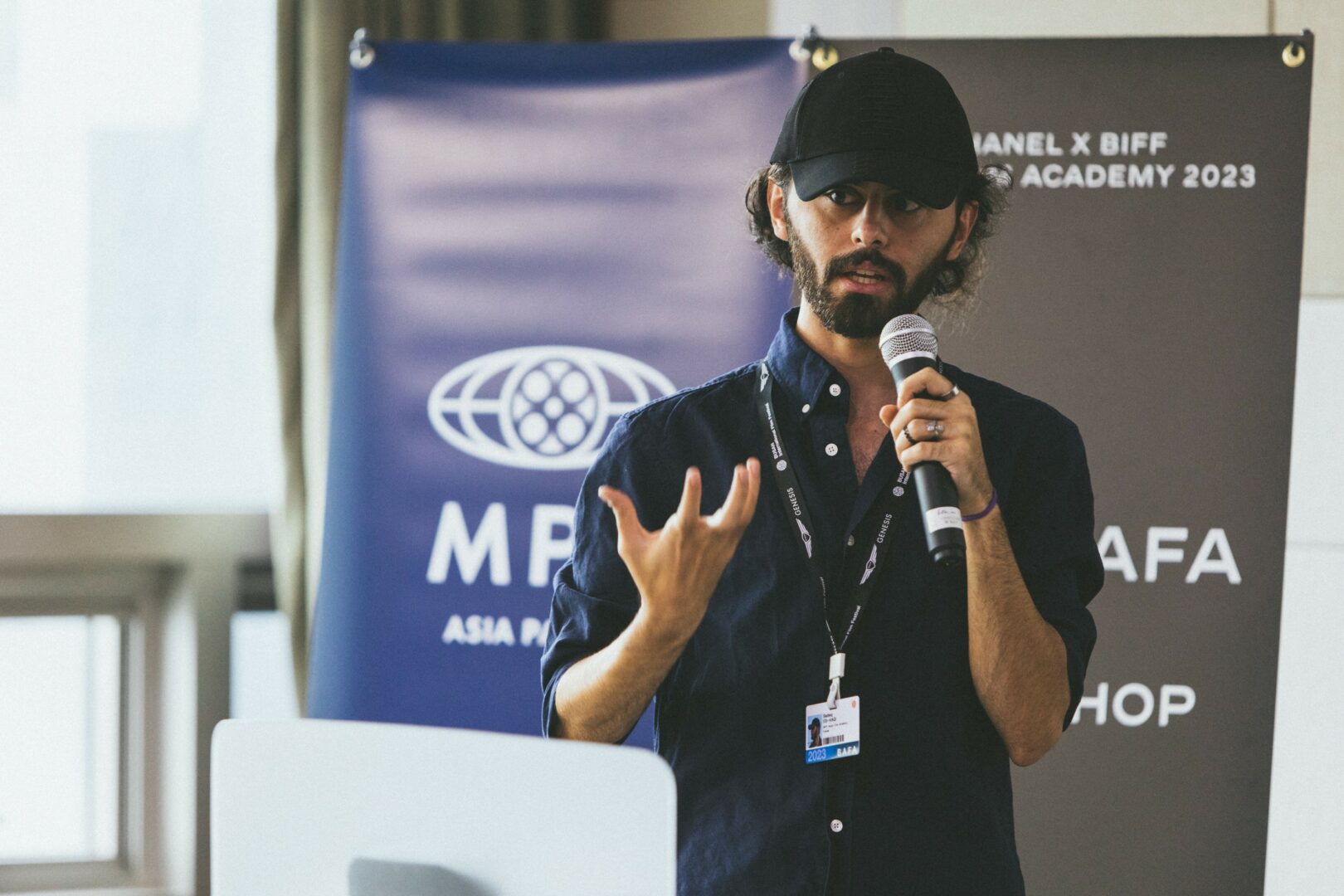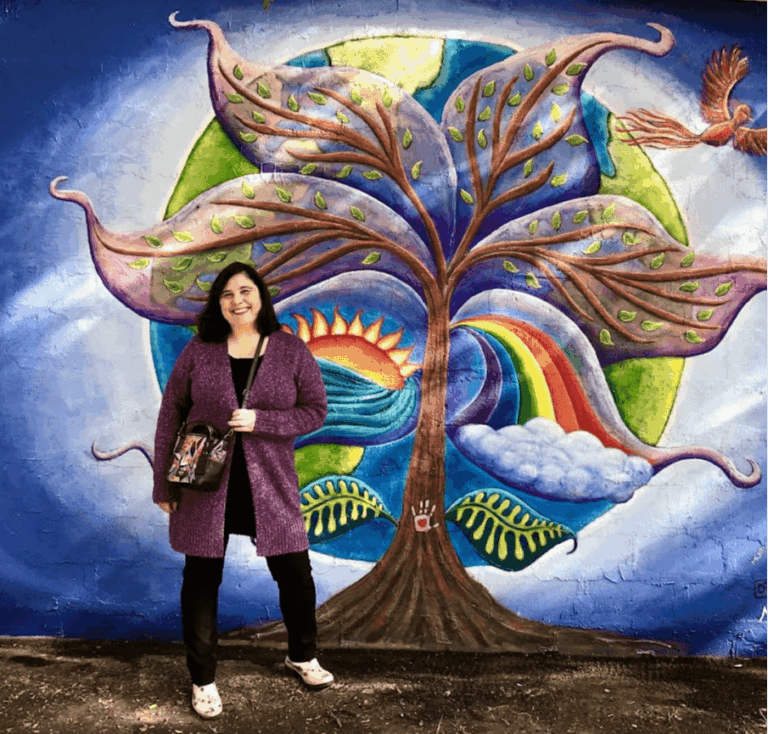We recently connected with Marisa Avelar and have shared our conversation below.
Hi Marisa, appreciate you sitting with us today to share your wisdom with our readers. So, let’s start with resilience – where do you get your resilience from?
I get my resilience from my ancestors and from the love and support of my family and friends. I oftentimes look to my history, my family, my grandparents, my parents, my roots and the people who came before me, who set an example for me of how to be resilient. I think about what they had to overcome as immigrants or their humble beginnings in their small towns and what they had to sacrifice for me to be where I am today. I also think about the suffering I have seen since I was a child from my father’s small country of El Salvador during their civil war and how much people have triumphed over and are able to smile and laugh afterwards. I also look to some of my family members who have come from adversity and tough times but still keep succeeding and thriving. I have never been a nihilist or had a nihilistic bone in my body. There has been plenty to be cynical and bitter about, but I refuse to let life do that to me. I also believe that joy is a form of resistance and that being hopeful is a way of life, because what other choice do we have? If you don’t believe something will happen it never will. I think the mind is a powerful thing and where we choose to focus and manifest our energy can be good or bad for us.
Appreciate the insights and wisdom. Before we dig deeper and ask you about the skills that matter and more, maybe you can tell our readers about yourself?
I’m Marisa Avelar, a graphic designer and mixed media artist living and working in Brooklyn, New York. I majored in Art with an emphasis in graphic design and painting. I have a broad base of design experience working for cultural institutions like the Smithsonian National Museum of the American Indian in Lower Manhattan, the Museum of Fine Arts Houston and volunteering with arts nonprofits like the Aurora Picture Show. I’ve worked also for places like Live Nation, and advertising and design agencies but in recent years have found it very rewarding to work in the nonprofit sector making a difference with my design. I really wanted to use my design for good and to make a difference in people’s lives. I have gained marketing skills through my jobs that I’ve used to help spread the word for good causes. It has been a privilege and wonderful to be able to make a living working as a graphic designer. It takes a lot of hard work and is a real challenge. My painting professor told me that to be a fine artist and live and work in the real world would be a challenge, well this is true. The practice and discipline of creating a space for yourself to be creative and make time for doing my fine art is important. Working on my own small projects and making time for them is also really great. I have my Etsy where I love to work on my holiday work and sell small sculptures, paintings, collages, wreaths and ornaments which has been so much fun and very rewarding. I have met so many nice people across the U.S. and lots of returning customers who send in pics where I see that my art has become a part of their life and traditions. In small and large ways, through my graphic design or fine art it has been rewarding to be able to touch and move others through my work.
If you had to pick three qualities that are most important to develop, which three would you say matter most?
I would say three areas that have been impactful have been, number one, persist and to never give up. There have been many times that I have felt like giving up, or that I wasn’t going to break through in my struggles of either getting a job, looking for someone to give me a chance, trying to make a piece work, trying to finish a painting, etc. Those were times where I either had to regroup, try to look for advice, ask myself what wasn’t working and rethink something. There is the famous quote, “Insanity is doing the same thing over and over again and expecting different results.” When I found something wasn’t working for me, I knew that I had to shake things up for myself and redirect. I also knew that I had to get outside of my comfort zone. It’s easy to get comfortable and stay there, but there is no way to grow without getting a little nervous and trying something new. I believe the universe rewards you when you go outside of your comfort zone and try things that are for your betterment. The second quality that has guided me on my journey is my work ethic. I work very hard and put a very strong effort into what I do. I am very passionate and don’t half ass my work. I think it can be seen in the quality and thought that I put into everything I do as well as the research and time that I also put into my work. I don’t think that anyone gets anywhere without working hard, and it shows. If you don’t come to something prepared and put thought into what you are doing, it shows. Lastly, the third quality I think that has helped me is to study the masters. Study, study, study! Soak it up! I love to collect art books, read art magazines, go to museums and galleries. It’s important as a creative person to constantly stay inspired and learn about the greats and how they did their work; study work that is successful and why you like it. For those early on in their journey: Persist, Work Hard and Study the Greats. I think you can start from those three places at any point and you will succeed. There are many times along the journey in life where you will encounter road blocks, you will get lost, and you will feel at a crossroads. If you persist, if you stay curious and study, if you work hard, you will always find a way!
As we end our chat, is there a book you can leave people with that’s been meaningful to you and your development?
A book that has played an important role in my development is The Blank Canvas: Inviting the Muse by Anna Held Audette. It was a gift to me from my painting professor when I graduated college to keep making art after I graduated. It was an important little book to keep with me as I embarked on my journey into the real world. Little did I know I would revisit this book from time to time. I remember her sitting me down and saying, you are going to get married, work, have a life and by the way want to make time to be an artist. This will help you make time and maintain that discipline. Some of the advice from it I have shared in the journey question in this interview and many lessons in this book have been important practices to keep as a working artist. There are times in life when artists have struggles and run into artist’s block, feel uninspired or stuck, feel lost. This book is intended to help you continue being an artist and set up the practice of living and working as an artist. Here are a couple of nuggets and takeaways that have helped me:
– I discuss studying the masters on your journey earlier here. The chapter “Art from Art”, she says, “The history of art has provided a vast reservoir of ideas. Not having access to this resource leaves you aesthetically impoverished. Looking at what artists have done before us confirms the existence of an infinite wealth of possibilities for aesthetic expression. It tells us each century produces new ideas, and by extension, ours and those to follow are certain to do the same. It also makes clear that artists cannot escape their own times.”
– Chapter Three titled “Working” talks about the importance of creating a studio or having a creative space. It can be a table, a corner of a room or a room if you are lucky. Just a space for creativity. This has helped me wherever I have lived. The practice of having a room or studio space keeps me in the spirit of working. I always have a place to pick up where I left off if I am creating something. It forces me to work creatively and I surround myself with inspiring images, supplies, art projects and a sanctuary to work in.
– In the chapter about “Overcoming Difficulties”, it’s important to not always strive for perfection in everything you put down but to just create and do. I think this is an important distinction to make: that the act of creating is important. Just working is important, and through practice and working you work gets better. You also have to trust that maybe a piece will go through an “ugly” period. You are experimenting and you will eventually make it work or figure it out somehow. “Not allowing yourself to learn by making mistakes leads to paralysis as surely as it would for a singer who couldn’t get past a wrong note.” One thing that also freed me up when I was working was when my painting professor told me to pretend I was five, and to play like I was five again. That allowed me to experiment and have fun and not get too precious with what I was putting down. The same idea is expressed here in this chapter with overcoming artist’s block.
Contact Info:
- Website: https://himarisa.com/
- Instagram: https://www.instagram.com/marisaartdesign/
- Facebook: https://www.facebook.com/hellotheremarisa
- Linkedin: https://www.linkedin.com/in/marisa-avelar/
- Twitter: https://twitter.com/artistamarisa
- Other: Graphic Design Portfolio: https://marisaavelar.com/
Etsy: https://www.etsy.com/shop/YarnDreamsShop








Image Credits
Photo of me by Scott Howard




